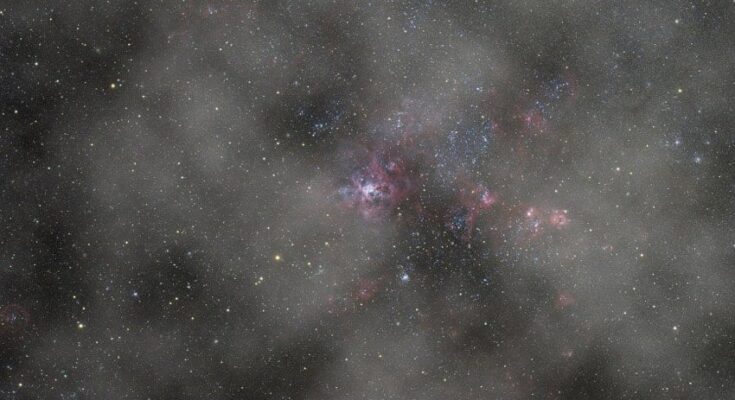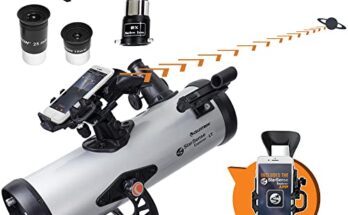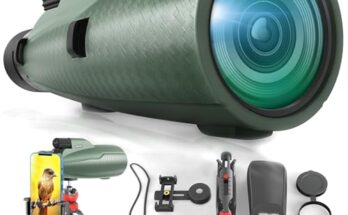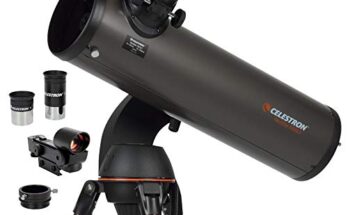Telescopes cannot see through clouds. Clouds block visible light, obstructing the view for optical telescopes.
Telescopes are powerful tools for observing celestial objects. They gather light and magnify distant stars, planets, and galaxies. Optical telescopes work best in clear skies, free from clouds. Clouds scatter and absorb light, making it impossible for optical telescopes to see through them.
Astronomers often place telescopes in high-altitude locations or space to avoid atmospheric interference. Radio telescopes, however, can detect radio waves that penetrate clouds, providing an alternative during cloudy conditions. Choosing the right telescope and location ensures the best astronomical observations.
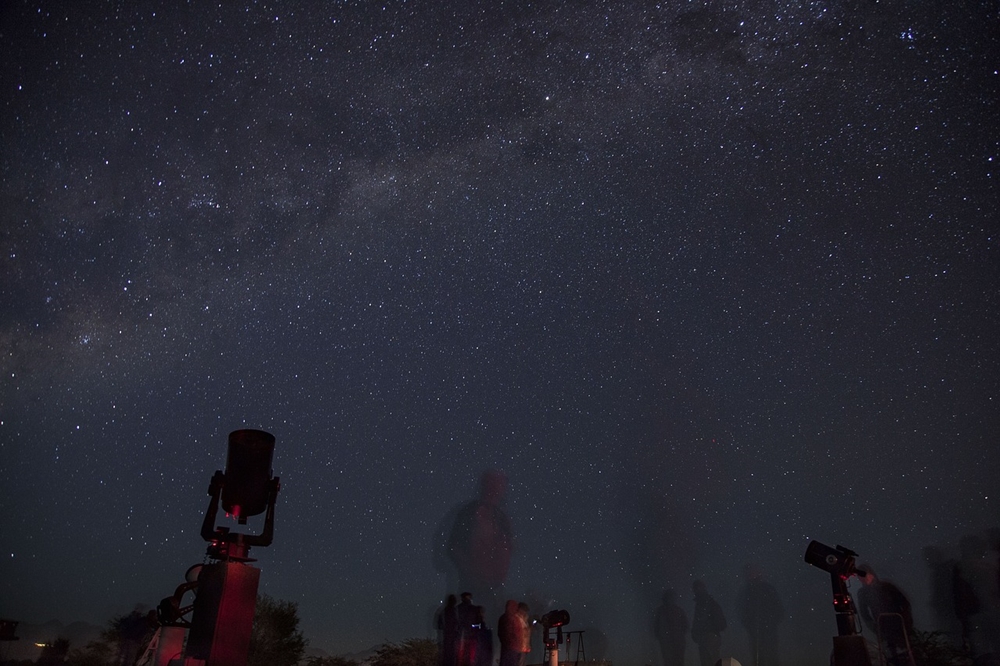
Credit: www.optics-trade.eu
Peering Into The Sky: Limits Of Visual Astronomy
Telescopes open a window to the universe. They allow us to explore distant stars and galaxies. But they have their limits. One major challenge is the Earth’s atmosphere. It can obstruct our view, especially with clouds. Let’s explore the hurdles visual astronomy faces.
Challenges Posed By Atmospheric Conditions
Weather conditions greatly affect telescope observations. Clouds are a major obstacle. They block visible light, making it impossible to see through them. Even thin clouds can cause issues. They scatter light, creating fuzzy images.
Other atmospheric conditions also pose problems. Turbulence in the air can distort images. The heat from the ground can cause shimmering effects. These factors combined make clear skies crucial for visual astronomy.
| Atmospheric Condition | Effect on Observation |
|---|---|
| Clouds | Block visible light completely |
| Turbulence | Distort and blur images |
| Heat from the ground | Create shimmering effects |
Visual Vs. Radio Wavelength Observations
Visual telescopes rely on visible light. They need clear skies to function. But there’s another type of telescope. Radio telescopes use radio waves. These can pass through clouds with ease.
Radio telescopes have an advantage. They can operate in all weather conditions. Rain, clouds, and even daytime do not affect them. This makes them useful for continuous observations.
Here are some key differences:
- Visual Telescopes: Need clear skies, affected by clouds and turbulence.
- Radio Telescopes: Work in any weather, not affected by clouds or time of day.
Both types of telescopes have their own uses. Visual telescopes are great for detailed images. Radio telescopes help us study objects hidden behind gas and dust.

Credit: www.youtube.com
The Nature Of Clouds In Astronomy
Telescopes are amazing tools for exploring the universe. But can they see through clouds? To understand this, we need to know about the nature of clouds in astronomy. This section will delve into the composition of clouds and their impact on stargazing, as well as how cloud cover affects astronomical events.
Composition Of Clouds And Their Impact
Clouds are made up of tiny water droplets or ice crystals. They float in the sky and block our view of the stars. This makes it hard for telescopes to see through them. The type of cloud can change how much it affects stargazing.
- Cumulus Clouds: These are fluffy and white. They usually form low in the sky and can block telescopes.
- Stratus Clouds: These are flat and gray. They cover large areas and make it tough to see the stars.
- Cirrus Clouds: These are thin and wispy. They form high in the sky and only slightly affect stargazing.
Understanding the type of cloud helps astronomers know if they can use their telescopes.
Cloud Cover And Astronomical Events
Cloud cover can ruin important astronomical events. Stargazers need clear skies to see these events. Here are some examples:
- Lunar Eclipses: During a lunar eclipse, the Earth’s shadow covers the moon. Clouds can block this beautiful event.
- Meteor Showers: Meteor showers are bright streaks in the sky. If clouds cover the sky, viewers miss these amazing sights.
- Planetary Alignments: Sometimes planets line up in the sky. Clouds can hide these rare events from view.
Being aware of cloud cover can help astronomers plan their observations better. They often use weather forecasts to choose the best nights for stargazing.
Different Types Of Telescopes And Their Capabilities
Understanding the capabilities of different telescopes is crucial. Each type offers unique advantages and limitations. Whether you are a novice or an expert, knowing how telescopes interact with clouds can enhance your stargazing experience.
Optical Telescopes And Cloud Penetration
Optical telescopes are the most common type. They use visible light to magnify distant objects. But, they have a limitation. They cannot see through clouds. Clouds block visible light, making it impossible to see stars or planets.
Even thin clouds can affect visibility. This makes optical telescopes less effective in cloudy conditions. For clear skies, optical telescopes are excellent. They provide detailed and high-resolution images.
Infrared And Radio Telescopes’ Advantage
Infrared telescopes offer a unique advantage. They detect infrared light, which can penetrate through clouds. This allows for better viewing in cloudy conditions. Infrared telescopes can see objects obscured by dust and gas.
Radio telescopes take it a step further. They use radio waves to observe the universe. Radio waves can pass through clouds and even thick dust. This makes radio telescopes highly effective in almost any weather.
Below is a comparison table to summarize the capabilities:
| Type of Telescope | Can See Through Clouds? | Ideal Conditions |
|---|---|---|
| Optical Telescopes | No | Clear Skies |
| Infrared Telescopes | Yes | Cloudy Skies |
| Radio Telescopes | Yes | Any Weather |
Myth Busting: Can Telescopes Really See Through Clouds?
Many believe that telescopes can see through clouds. This is a common misconception. Let’s explore the truth behind this myth.
Common Misconceptions
People often think telescopes are magical devices. They assume these instruments can see through any obstacle. This includes clouds. Some believe advanced telescopes work like X-rays. They think they can penetrate clouds and even walls.
Another misconception is that all telescopes are the same. Many assume a powerful telescope can see through anything. This is not true. Different types of telescopes serve different purposes.
The Truth About Cloud Penetration In Astronomy
Telescopes cannot see through clouds. Clouds block visible light. This makes it impossible for optical telescopes to see through them. Astronomers need clear skies for stargazing. Cloudy nights are not suitable for using optical telescopes.
There are some exceptions, though. Radio telescopes can detect radio waves. These waves can pass through clouds. Yet, they cannot provide clear images like optical telescopes. Infrared telescopes can also see through some clouds. But even they struggle with thick clouds.
Here’s a quick comparison:
| Telescope Type | Can It See Through Clouds? |
|---|---|
| Optical Telescope | No |
| Radio Telescope | Partially |
| Infrared Telescope | Partially |
In summary, most telescopes cannot see through clouds. Only specific types can partially penetrate them. Clear skies are essential for the best astronomical observations.
Technological Advances In Telescopic Observations
Telescopes have come a long way since their invention. Modern technology has given us tools to see more clearly through the skies. These advances help astronomers see objects even through some obstacles. Let’s explore some of the key technologies that have improved telescopic observations.
Adaptive Optics And Improved Visibility
One major breakthrough is adaptive optics. This technology corrects distortions caused by Earth’s atmosphere. It uses a system of small mirrors that adjust in real-time. As a result, it can reduce the blurring effect of the atmosphere.
Adaptive optics makes ground-based telescopes much more effective. This technology allows astronomers to capture clearer images. Even with some cloud cover, adaptive optics can still enhance visibility. This system has revolutionized how we observe the universe from Earth.
Satellites And Space Telescopes: Beyond Atmospheric Limits
Another significant advancement is the use of satellites and space telescopes. These telescopes operate outside of Earth’s atmosphere. This eliminates the problem of atmospheric distortion altogether.
Space telescopes like the Hubble Space Telescope have provided stunning images. These telescopes can see objects that ground-based telescopes cannot. Being in space, they are not affected by clouds or weather conditions.
There are several advantages of space telescopes:
- No atmospheric distortion
- Continuous observation without weather interruptions
- Ability to observe in multiple wavelengths
Space telescopes have opened up new possibilities for astronomical research. They have helped us understand the universe in ways that were not possible before.

Credit: www.optics-trade.eu
The Role Of Astronomy Satellites In Cloudy Skies
Ground-based telescopes struggle to see through clouds. This makes observations challenging. Astronomy satellites help overcome this problem. They provide a clear view of space from above the clouds. These satellites collect data without weather interference.
Hubble Space Telescope: An Example
The Hubble Space Telescope is a famous example. It orbits outside Earth’s atmosphere. Hubble can capture clear images of distant galaxies. Its location in space keeps it free from weather issues. This allows it to take clear pictures of the universe.
Hubble has made many important discoveries. It has helped scientists understand the universe better. The telescope has captured images of stars, planets, and galaxies. These images have advanced our knowledge of space. Hubble’s success shows the importance of space telescopes.
The Impact Of Satellite Data On Modern Astronomy
Satellite data has transformed modern astronomy. It provides information that ground-based telescopes cannot. This data helps scientists study space in new ways. Satellites can observe different wavelengths of light. They can capture X-rays, ultraviolet, and infrared light. Ground-based telescopes cannot see these wavelengths well.
Satellites also help with constant monitoring. They can observe celestial events without interruption. This is crucial for studying phenomena like supernovae and eclipses. Satellites collect massive amounts of data. This data helps scientists make new discoveries. It also helps improve existing theories.
| Benefits of Satellite Data | Details |
|---|---|
| Clear Images | No weather interference |
| Wide Range of Observations | Captures various wavelengths |
| Continuous Monitoring | Constant data collection |
In summary, astronomy satellites play a vital role. They provide clear views and valuable data. This data helps scientists understand the universe better.
How Professional Astronomers Navigate Cloudy Nights
Professional astronomers face many challenges, and cloudy nights are among the toughest. Observing stars and galaxies requires clear skies. But clouds can ruin observations. So, how do astronomers manage? They use smart strategies and technologies to get around these obstacles.
Scheduling Observations Around Weather
One key strategy is scheduling observations around weather. Astronomers use weather forecasts to plan their work. They often rely on advanced weather prediction models. These models help them determine the best nights for observation. By staying flexible, they can switch plans quickly if clouds appear.
Here’s a table summarizing the tools used for weather forecasting:
| Tool | Description |
|---|---|
| Satellite Imagery | Provides real-time cloud cover data |
| Weather Models | Predicts future weather patterns |
| Ground Observations | Local weather stations report current conditions |
Using Data From Multiple Observatories
Astronomers also benefit from using data from multiple observatories. They often collaborate with observatories worldwide. This approach ensures they can gather data even if clouds block the sky at one location. By sharing data, astronomers build a complete picture of the sky.
Here are some advantages of using multiple observatories:
- Redundancy: Backup observations if one site is cloudy
- Coverage: Observing the same object from different angles
- Time Zones: Continuous observation as the Earth rotates
These strategies help astronomers continue their important work. Despite the challenges posed by cloudy nights, they can still make significant discoveries.
Tips For Amateur Astronomers: Cloudy Skies Aren’t The End
Cloudy skies can be a real challenge for amateur astronomers. But don’t lose hope! There are ways to enjoy stargazing even with clouds. Here are some practical tips to make the most of your observation sessions.
Planning Your Observation Sessions
Planning is key to successful stargazing. Check the weather forecast ahead of time. Use apps like AccuWeather or WeatherBug. These apps can give you precise cloud cover details. Choose a night with minimal cloud cover for the best viewing experience.
Create a schedule and set reminders. Check the moon phase too. A new moon is ideal for observing faint celestial objects. Moonlight can wash out many details in the night sky. Avoid nights with a full moon if possible.
Embracing Cloud Gaps And Clear Patches
Clouds often move and create gaps. Be patient and look for these clear patches. Use these moments to focus on the brightest stars and planets. These objects can often be seen even through thin clouds.
Set up your telescope in an open area. Avoid places with tall buildings or trees. These can block your view of clear patches. Constantly adjust your telescope to follow the cloud gaps. This way, you can maximize your observation time.
| Observation Tips | Details |
|---|---|
| Check Weather Forecast | Use reliable weather apps |
| Choose Nights with Minimal Clouds | Plan ahead for clear nights |
| Avoid Full Moon | New moon nights are best |
| Look for Cloud Gaps | Be patient and use clear patches |
| Set Up in Open Areas | Avoid obstructions like trees |
Remember, stargazing is a hobby that requires patience and planning. Use these tips to navigate cloudy skies. Your perseverance will pay off with stunning views of the cosmos.
Frequently Asked Questions
Can You Use A Telescope On A Cloudy Day?
Using a telescope on a cloudy day is ineffective. Clouds obstruct the view, making celestial objects invisible. Clear skies are essential.
Can You See Planets Through Clouds?
No, you cannot see planets through clouds. Clouds block the view of celestial objects, including planets. Clear skies are necessary for observing planets.
Can You Stargaze Through Clouds?
No, you cannot stargaze through clouds. Clouds block the view of stars. Clear skies are essential for stargazing.
Can Telescopes See Through Atmosphere?
Telescopes can see through the atmosphere, but the view is often blurred by atmospheric distortion. Space telescopes avoid this issue.
Conclusion
While telescopes excel in stargazing, they struggle with cloudy skies. Clouds obstruct their view, making clear nights essential. Advanced technology like adaptive optics helps but isn’t foolproof. For the best celestial views, always aim for cloud-free nights. Understanding these limitations enhances your stargazing experience.
Keep exploring the wonders of our universe!
